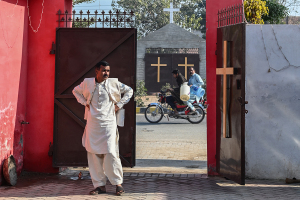Holy Land Honey for a Sweet New Year
Honey. It's sweet and sticky and these days, everywhere you look in the Holy Land, it seems to be available in more varieties than one can count. So what is this fascination with honey anyway? Why is it that every September there seems to be a beehive of activity surrounding the sweet and sticky paste?
A Sweet New Year
As those who are familiar with Jewish customs know, honey is used at the Jewish festival of Rosh Hashanah, which will be celebrated from Wednesday night, September 8 through Friday afternoon, September 10th this year. The holiday is said, according to Jewish tradition to represent the moment when Adam first had life breathed into him 5,771 years ago (It is interesting to note as an aside that the Jewish Kabalah states that this was the 6th day of creation but that we celebrate the creation of the world from the 6th day and not the first - the Kabalah states that the other days of creation"are beyond human comprehension.").
The honey is meant to symbolize that we should have a sweet new year. Traditionally, the honey is used as a dip for various foods, especially an apple (though the challah bread commonly eaten on Jewish holidays is also dipped in honey for Rosh Hashanah and some people like to dip things like pomegranate seeds and other kinds of fruit). The apple is chosen because of a passage in the Song of Songs (2:3), King Solomon's ode to God where he refers to the people of Israel as being just as precious as the "rare" apple. However, while that explains the apple, why the honey?
But Why Honey?
We were more curious however, since we are discussing honey, why honey is considered so central. Why not some other sweet thing? Maybe sugar water or fruit syrup? Well, besides the fact that honey is a traditional part of the Land of Israel (i.e. a land flowing with milk and honey), we found an interesting reference in a book called Right and Reason. This is a book which explains Jewish customs and they refer us to a passage in the Book of Psalms, 81:17 (which it just so happens is read in Orthodox synagogues on Rosh Hashanah) "And they shall feed him the best of the wheat and with honey from the rock will I satisfy you." It seems that the whole fixation on honey is more than just about it being sweet. It's actually a reminder of the miracle God is said to have performed for His people in the desert, i.e. drawing water from a rock.
Where to See it All in Action
Since this is a travel blog, we thought you might be interested in learning more about honey production in the Holy Land. It turns out that 60% of all honey in Israel is produced in a small kibbutz (a collective farm) called Yad Mordechai. The kibbutz, located near Ashkelon in southern Israel is named for Mordechai Anielwicz, a Jewish partisan who fought the Nazis during World War II and is home to the Bee and Honey House, one of the few places in Israel where one can go to actually see production of honey from real bees and taste the different varieties of honey created in this country (they boast at least half a dozen different varieties, including bee honey, date honey, sunflower honey and orange blossom honey to name just a few).
The kibbutz offers tours on a seasonal basis (call for details and hours) which include a display of a live bee hive, a video about honey production and a display dedicated to the details of how honey is made. You can also purchase various gift baskets to bring home to friends and relatives.
Another place to try is Galil Honey Products, a smaller farm where demonstrations of bee production and silk making are offered to the public. Located at Kibbutz Shamir on the edge of the Golan Heights, the kibbutz features live bee demonstrations and of course offers the various gift baskets of locally produced honey and other products.
Wishing you and your loved ones a happy, healthy and sweet New Year.
Warm regards,
Elisa





























